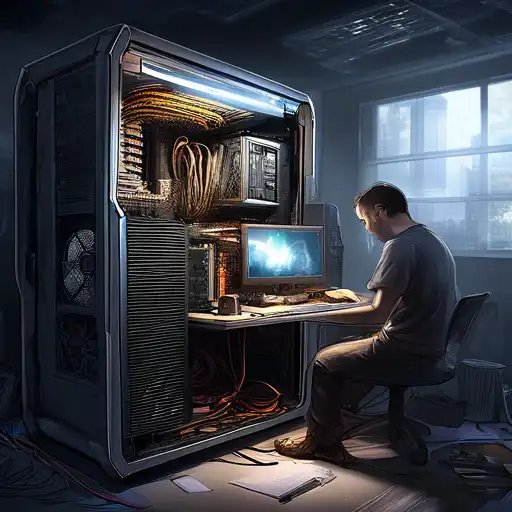Introduction to PC Building
Building your own PC can be a rewarding experience, offering both personal satisfaction and the opportunity to create a machine that perfectly fits your needs. Whether you're a gamer, a content creator, or just someone looking for a custom computing solution, this guide will walk you through the basics of assembling your own computer.
Why Build Your Own PC?
There are several advantages to building your own PC, including cost savings, the ability to customize every component, and the satisfaction of assembling something with your own hands. Plus, you'll gain valuable knowledge about how computers work.
Essential Components for Building a PC
Before you start, you'll need to gather all the necessary components. Here's a list of the essential parts:
- Processor (CPU)
- Motherboard
- Memory (RAM)
- Storage (SSD or HDD)
- Power Supply (PSU)
- Case
- Graphics Card (GPU) - if not integrated into the CPU
Step-by-Step Guide to Assembling Your PC
1. Prepare Your Workspace
Ensure you have a clean, static-free surface to work on. Gather all your tools and components before you begin.
2. Install the CPU
Carefully place the CPU into the motherboard's socket, ensuring it's correctly aligned. Secure it according to the motherboard's instructions.
3. Install the RAM
Insert the RAM sticks into the appropriate slots on the motherboard. Make sure they're firmly seated and the clips lock into place.
4. Mount the Motherboard
Place the motherboard into the case, aligning it with the standoffs. Secure it with screws.
5. Install the Storage and GPU
Connect your SSD or HDD to the motherboard and power supply. If you're using a dedicated GPU, insert it into the appropriate slot on the motherboard.
6. Connect the Power Supply
Attach the PSU to the motherboard, CPU, GPU, and storage devices. Ensure all connections are secure.
7. Final Checks and Boot Up
Double-check all connections, then power on your PC. If everything is connected correctly, you should see the BIOS screen.
Tips for First-Time Builders
Building a PC can seem daunting, but with patience and attention to detail, anyone can do it. Here are a few tips to help you along the way:
- Watch tutorial videos for visual guidance.
- Keep your components organized to avoid confusion.
- Don't force anything; components should fit together smoothly.
- Consult your motherboard's manual for specific instructions.
Conclusion
Building your own PC is an achievable goal for beginners, offering a unique blend of customization, performance, and value. By following this guide, you're well on your way to creating a computer that meets your exact needs. Remember, the key to success is patience and attention to detail. Happy building!
